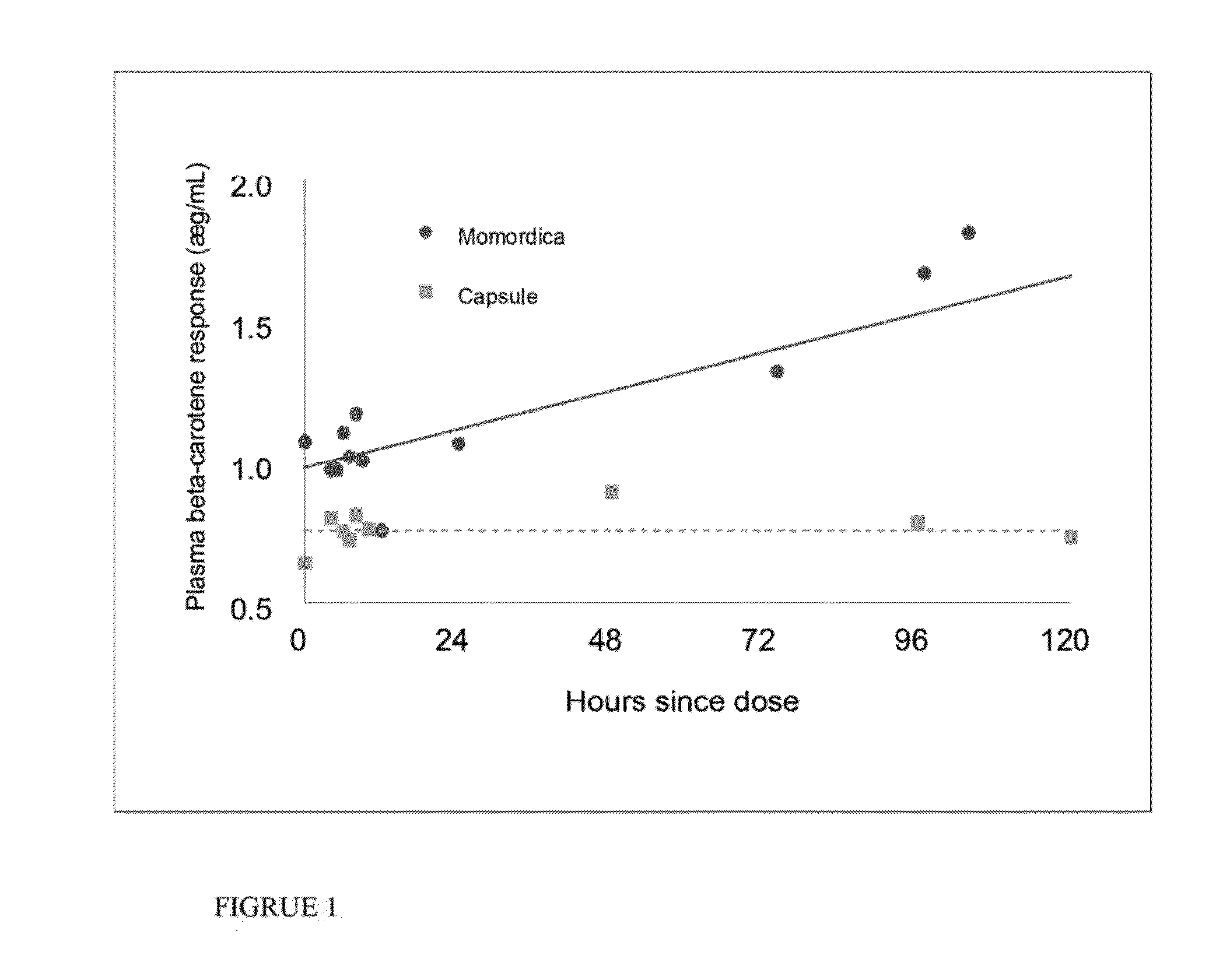Plant retinol formulations and associated method
a technology of plant retinol and formulation, which is applied in the field of plant retinol formulations, can solve the problems of toxic large doses of retinol, and achieve the effects of preventing vitamin a deficiency disorder, enhancing absorption, and effective use of retinol to impart health benefits
- Summary
- Abstract
- Description
- Claims
- Application Information
AI Technical Summary
Benefits of technology
Problems solved by technology
Method used
Image
Examples
Embodiment Construction
[0012]Before particular embodiments of the present invention are disclosed and described, it is to be understood that this invention is not limited to the particular process and materials disclosed herein as such may vary to some degree. It is also to be understood that the terminology used herein is used for the purpose of describing particular embodiments only and is not intended to be limiting.
DEFINITION OF TERMS
[0013]In describing and claiming the present invention, the following terminology will be used.
[0014]The singular forms “a,”“an,” and “the” include plural referents unless the context clearly dictates otherwise. Thus, for example, reference to “a carrier” includes reference to one or more of such carriers, and reference to “an excipient” includes reference to one or more of such excipients.
[0015]As used herein, “formulation” and “composition” may be used interchangeably herein, and refer to a combination of two or more elements, or substances. In some embodiments a compos...
PUM
| Property | Measurement | Unit |
|---|---|---|
| wt % | aaaaa | aaaaa |
| wt % | aaaaa | aaaaa |
| wt % | aaaaa | aaaaa |
Abstract
Description
Claims
Application Information
 Login to View More
Login to View More - R&D
- Intellectual Property
- Life Sciences
- Materials
- Tech Scout
- Unparalleled Data Quality
- Higher Quality Content
- 60% Fewer Hallucinations
Browse by: Latest US Patents, China's latest patents, Technical Efficacy Thesaurus, Application Domain, Technology Topic, Popular Technical Reports.
© 2025 PatSnap. All rights reserved.Legal|Privacy policy|Modern Slavery Act Transparency Statement|Sitemap|About US| Contact US: help@patsnap.com

